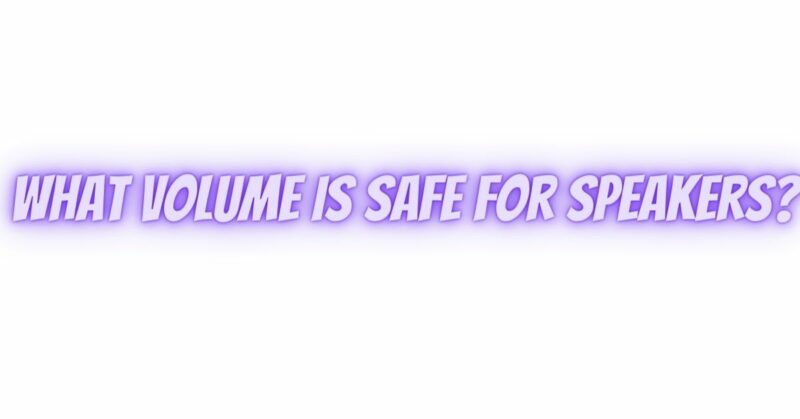Determining the safe volume level for your speakers is essential to ensure the longevity of your audio equipment and protect your hearing. Sound can be powerful, and exceeding certain thresholds can lead to damage. In this article, we’ll explore how to find a safe volume level for your speakers to safeguard both your audio gear and your ears.
1. Speaker and Amplifier Compatibility:
The safety of your speakers largely depends on the compatibility between the speakers and the amplifier or receiver powering them. Ensure that the amplifier’s power output matches the speaker’s power-handling capacity. Overpowering a speaker with excessive wattage can lead to mechanical damage.
2. Speaker Distortion:
One clear indicator of an unsafe volume level is speaker distortion. If you hear distortion, crackling, or clipping, it’s a sign that the speakers are being pushed too hard. Reduce the volume immediately to prevent potential damage to the speakers and preserve audio quality.
3. Speaker Efficiency:
Speaker efficiency, measured in decibels per watt (dB/W), can influence how loud a speaker can get with a given amount of power. More efficient speakers can produce higher volumes with less power. If you have highly efficient speakers, they may get louder at lower wattage levels, reducing the risk of damage.
4. Listening Distance and Environment:
Consider the distance between you and the speakers, as well as the room’s acoustics. In a small room with reflective surfaces, sound waves can bounce around and amplify, making it easier to reach unsafe volume levels. Be particularly cautious in such environments.
5. Volume Knob and Source Device:
The volume control on your amplifier, receiver, or source device plays a crucial role. Gradually increase the volume from the lowest setting to find a comfortable listening level. Avoid abruptly raising the volume to a high level, as this can lead to unexpected and potentially damaging sound bursts.
6. Protecting Your Hearing:
In addition to safeguarding your speakers, it’s essential to protect your hearing. Prolonged exposure to high-volume levels can lead to hearing loss. The Occupational Safety and Health Administration (OSHA) recommends the following safe listening practices:
- 85 dB: Limit continuous exposure to sound levels above 85 dB. Many smartphones and portable audio devices now feature built-in volume limiting settings to help protect your hearing.
- Use Ear Protection: When attending loud concerts, using power tools, or being in noisy environments, use hearing protection such as earplugs or earmuffs.
- Take Breaks: Give your ears a rest by taking short breaks from high-volume environments or music listening sessions. Rest helps reduce the risk of hearing damage.
7. Consider a Volume Limiter:
Some audio equipment and devices offer volume limiters that allow you to set a maximum volume level. These limiters can be useful, especially when children are using the equipment, as they can help prevent accidental exposure to harmful volumes.
Conclusion:
The safe volume level for your speakers depends on various factors, including speaker specifications, amplifier capabilities, room acoustics, and your personal preferences. To protect your speakers and your hearing, it’s essential to use common sense and be mindful of distortion, listening duration, and listening distance. Gradually adjust the volume to a comfortable level, and remember that “louder” doesn’t necessarily mean “better.” Prioritize your long-term listening enjoyment and hearing health by keeping sound levels within safe and enjoyable limits.


